Industry case
10+ years of industry senior engineer, engaged in biological medical device finite element analysis of practical experience, long-term cooperation with many medical equipment enterprises and medical research centers, combined with medical finite element analysis simulation technology in medical equipment research and development, biomedical program research and innovation has obtained many patents.
Provide Finite Element Analysis Technical Services for Biomedical Applications
Our senior engineers with over 10 years of experience in enterprises have rich practical experience in finite element analysis in the biomedical industry. We have long-term cooperation with numerous medical equipment enterprises and medical research centers, and have obtained many patents in the research and development of medical equipment and the innovation of biomedical solutions. By utilizing the increasingly powerful and perfected modeling functions and their interface tools of existing finite element software, we can build three-dimensional organ tissues such as human bones, muscles, and blood vessels, and simulate their biomechanical material properties. We can simulate various types of boundary conditions and load constraints (geometric constraints, fixed loads, impact loads, temperature characteristics, etc.), conduct various types of simulation analyses such as structural statics, dynamics, fatigue, and fluid mechanics, so as to obtain the deformation, stress/strain distribution, internal energy change, flow characteristics, and ultimate failure prediction of the parts under different virtual experimental conditions.
Involve the Following Areas of Biomedical Finite Element Analysis
· Orthopedic Products · Medical Fasteners · Eye Modeling · Soft Tissue Simulation · Medical Packaging · Medical Electronic Systems · Virtual Biomechanics · Knee Replacement · Human Body Modeling · Soft Tissue and Joint Modeling
· Hospital Equipment · Laser Welding · Ablation Catheter · Dental Implants · Mechanical Connectors · Prosthetics · Pacemakers · Vascular Implants · Defibrillators · Heart Valve Replacement Surgery
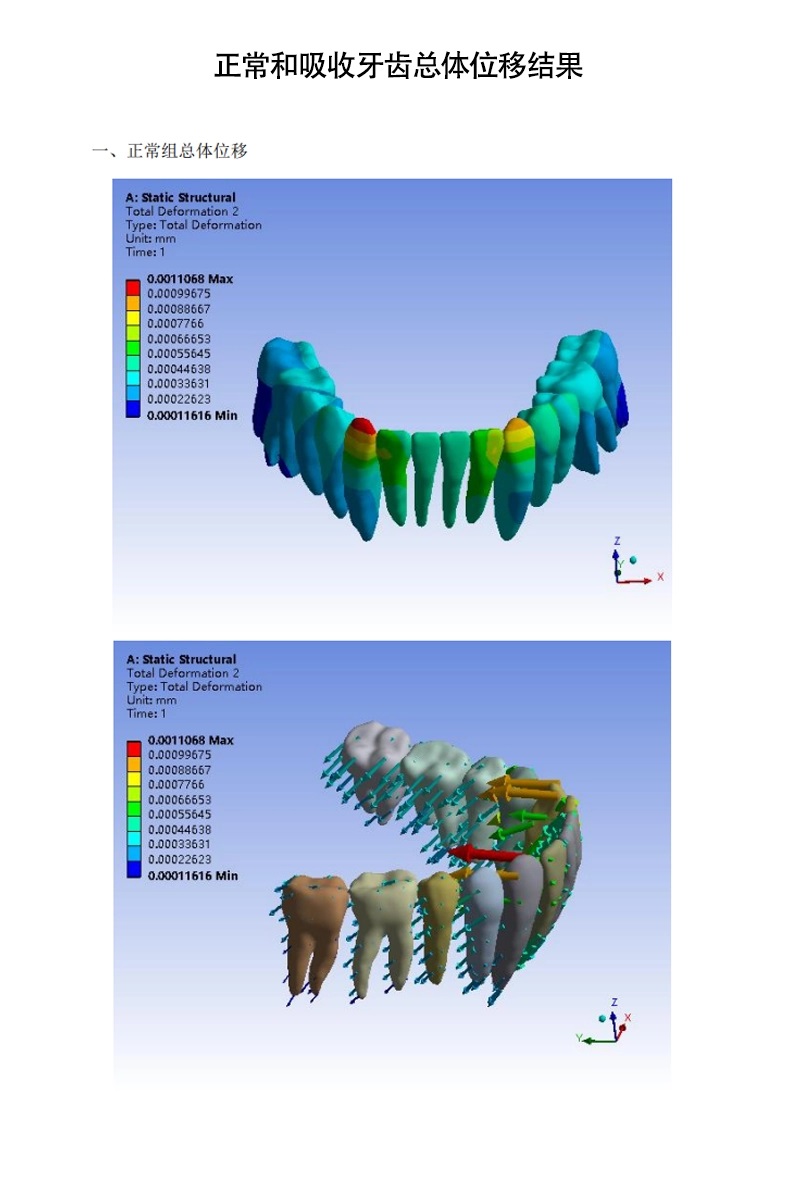
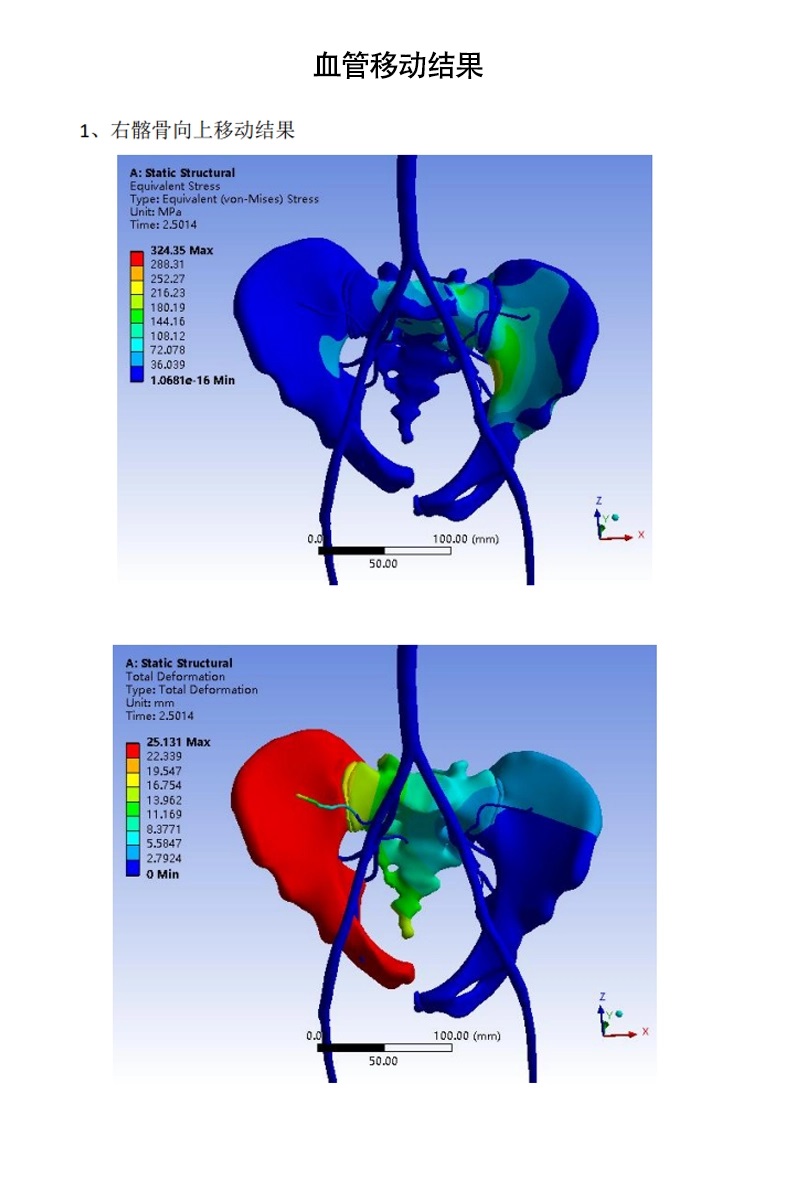
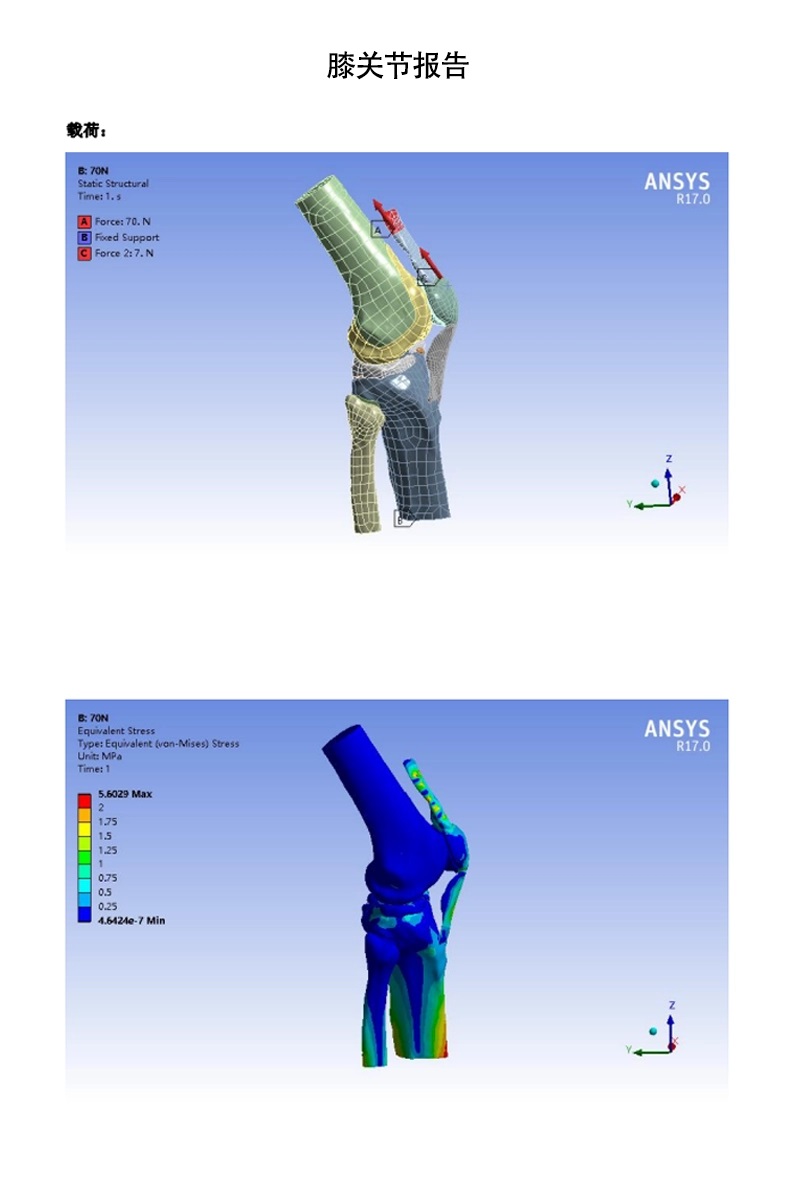
Biomedical Finite Element Analysis - Projects Involving Simulation Types
· Structural Analysis · Durability and Fatigue · Fluid-Structure Interaction · Advanced Nonlinear Materials · Moving Structure Interaction · Mechanism Simulation · System-Level Performance and Optimization
· Drop Test and Packaging Analysis · Simulation Data and Process Management · Production Simulation · Biocompatible Material Analysis · Nonlinear and Contact Modeling · Stress and Strain Analysis
· Optimal Design · Noise and Vibration · Motion and System Analysis · Heat and Heat Transfer Analysis · Acoustic Analysis · Multidisciplinary Analysis · Material Modeling (Viscoelasticity, Shape Memory, etc.)
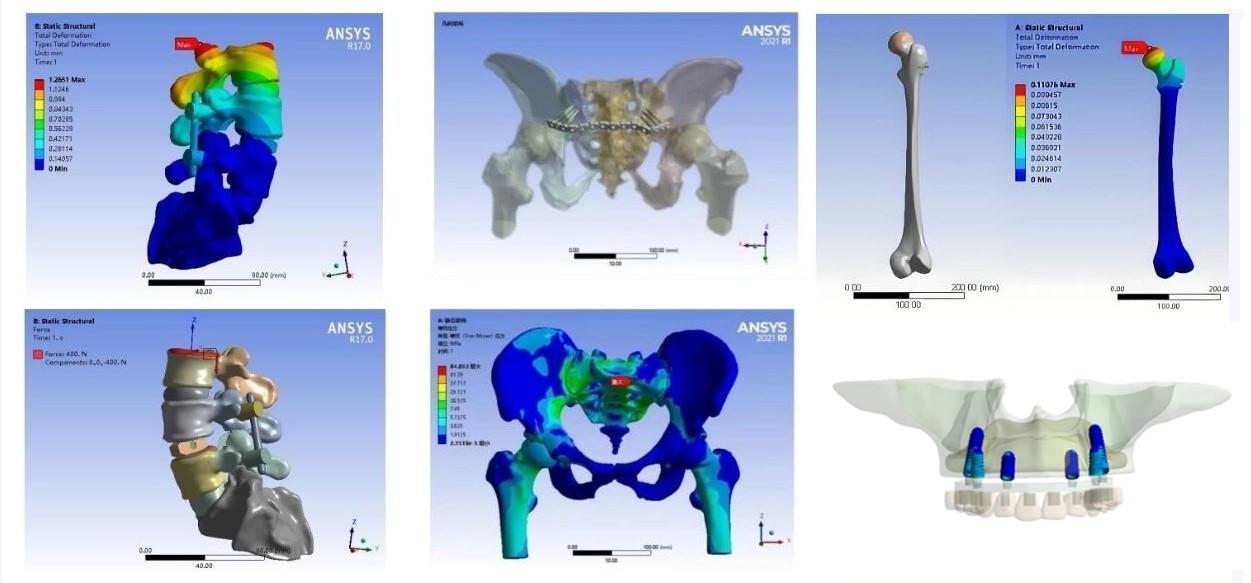
Biomedical Finite Element Simulation Process
Import CT data in DICOM format into the computer, use Mimics software to extract images, conduct automated threshold segmentation and differentiation based on the gray values of different tissues, and initially separate out the main model of the studied part and the STL models of surrounding tissues, etc.; Import the STL models into Geomagic software, remove the spikes and redundant features of the models, then optimize and smooth the models, use the accurate surface module to detect the contour lines of the models, edit the deformed or unreasonable contours, and appropriately add contour lines to facilitate the generation of surface patches; After the surface patches are successfully generated, fit the surfaces, and then export the smoothed models as general STEP format model data files; Then use SolidWorks software to perform relevant model assembly operations on the STEP models; After that, import the established models into ANSYS software, assign corresponding material parameters and loads, and finally conduct relevant mechanical analyses on the established models.
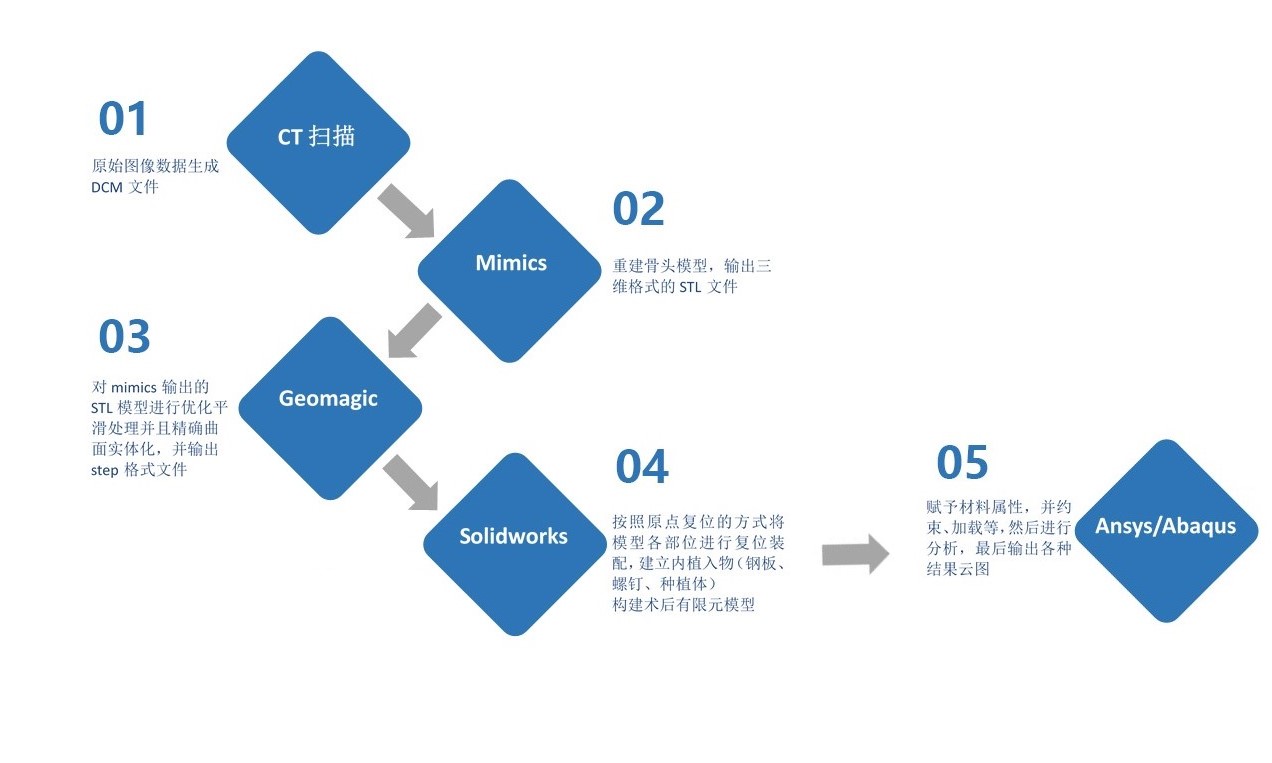
Fine Mesh is the Basis for Simulation Accuracy
Fine finite element mesh generation is the basis for the accuracy of simulation results. Generally speaking, in finite element analysis, the denser the mesh division, the closer the calculation results are to the real solution. However, the denser the mesh division is, the more rapidly the scale of calculation and storage space will increase, thus reducing the calculation efficiency. Therefore, a balance should be struck among calculation efficiency, storage space and accuracy. Under the condition of meeting the solution accuracy requirements, efforts should be made to achieve high calculation efficiency and small storage space as much as possible. If one day in the future, computer technology develops to the point where we are no longer bothered by calculation efficiency and storage space, I think that finite element analysis engineers nowadays may lose 60 to 70 percent of their existing value, because finite element analysis will become extremely simple. As long as the mesh is divided densely enough, we can quickly obtain satisfactory results.
However, the reality is that we can't do this. For an engineering problem, we may spend a lot of manpower and material resources on finite element modeling, especially on mesh generation. The quality of mesh generation largely depends on the practical work experience of analysts. Generally speaking, the regions of concern should be divided more finely, the areas with large stress gradient changes should be refined, the mesh density for dynamics should be higher than that for statics, and the mesh for structural analysis should be sparser than that for electromagnetic analysis.

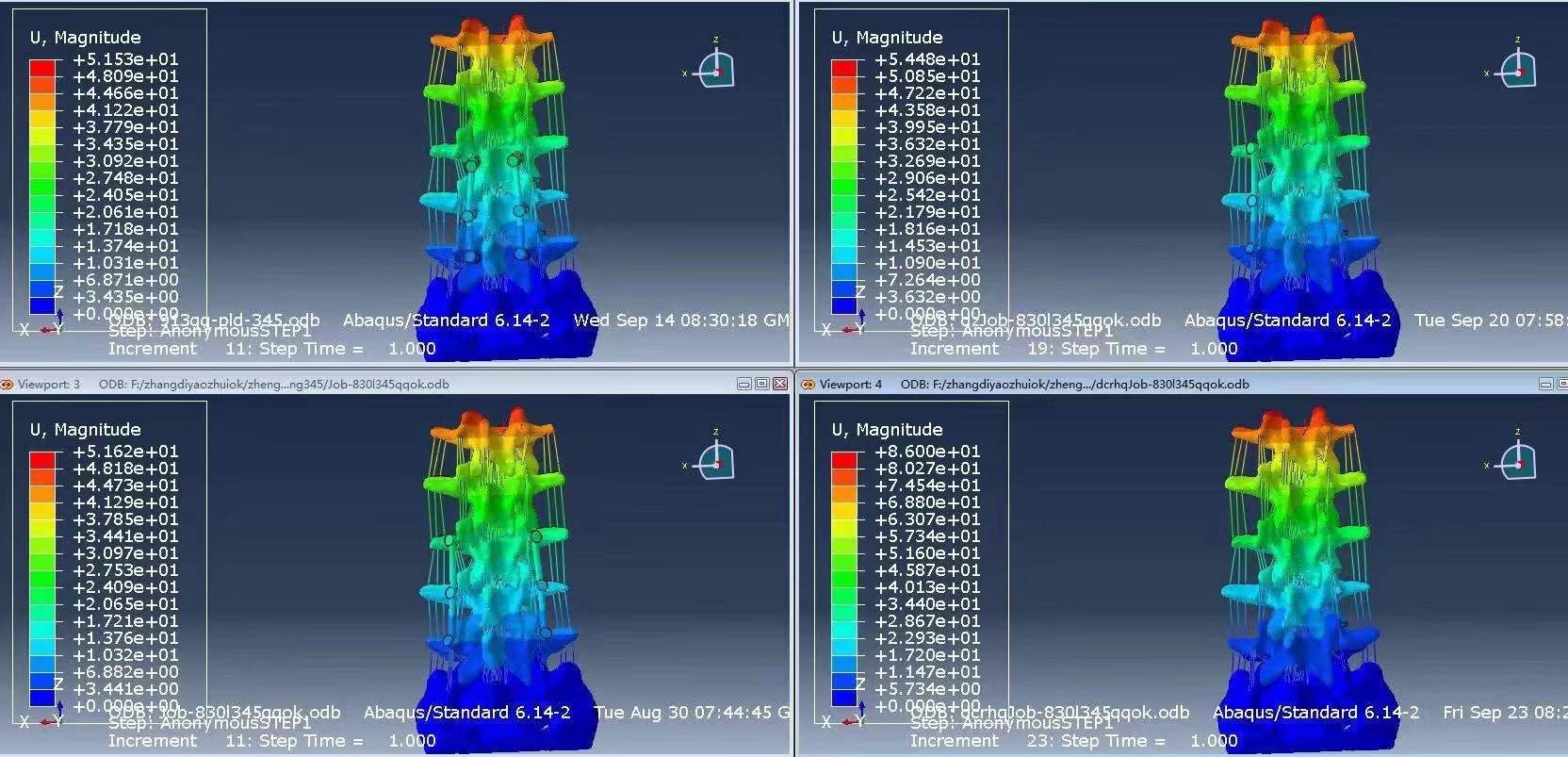
Finite Element Analysis and Simulation of Knee Joint Prosthesis
We undertake finite element analysis projects in the medical field, such as the analysis of pelvis, lumbar vertebrae, cervical vertebrae, shoulder joints, hip joints, elbow joints, knee joints, ankle joints, dentures, implants, maxilla and mandible, mucous membranes, dental crowns, etc.
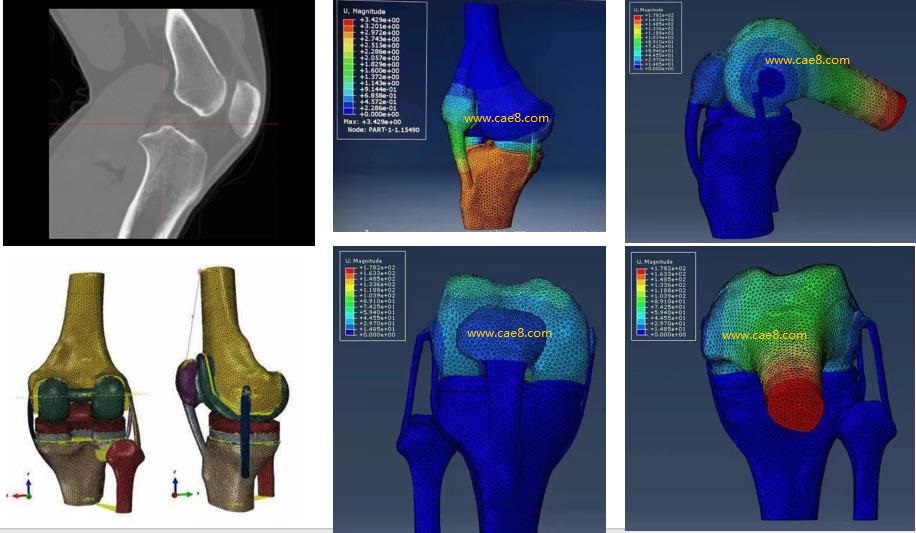
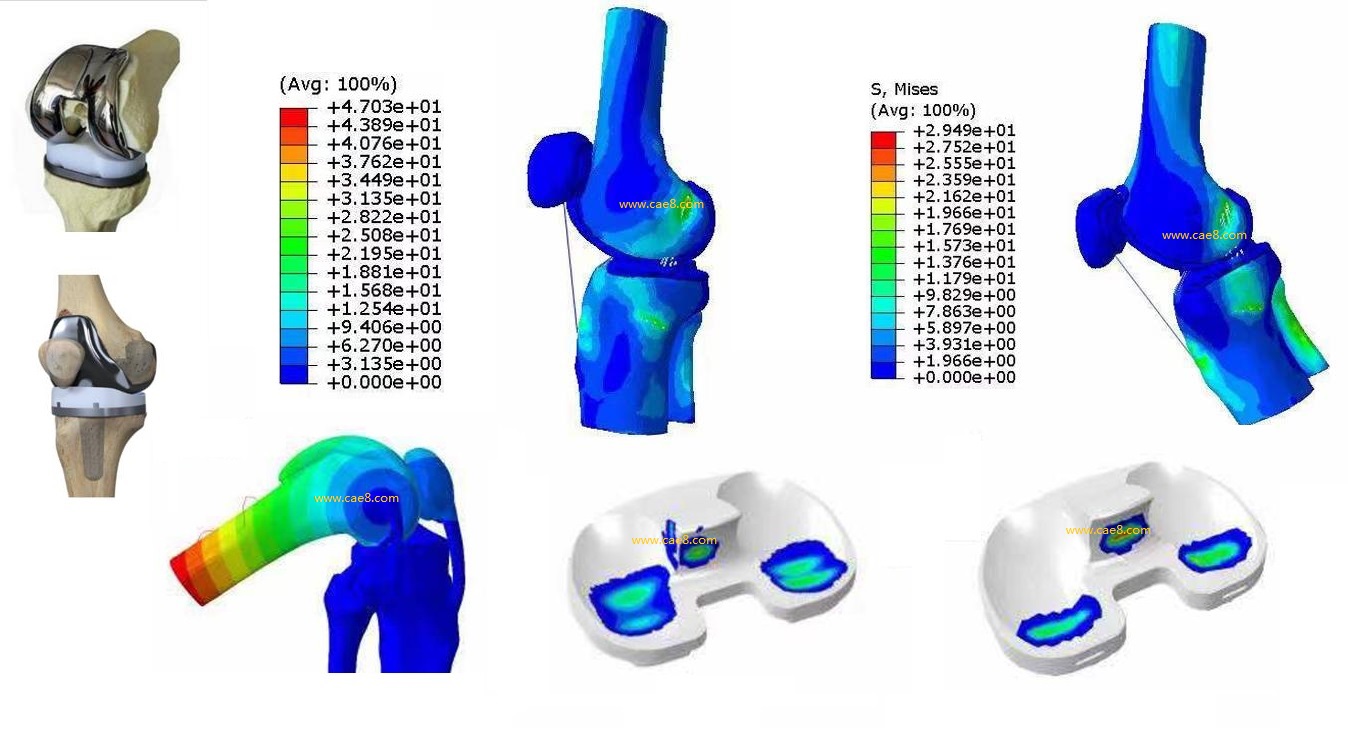

Biomedical Finite Element Analysis Related Software
ANSYS:
Application Fields: Static structural analysis, structural dynamic analysis, structural nonlinear analysis, dynamic analysis, thermal analysis, electromagnetic field analysis, fluid dynamics analysis, sound field analysis, piezoelectric analysis
Application Scope: It is applied in numerous industries such as aviation, aerospace, electronics, vehicles, ships, transportation, communication, construction, electronics, medical care, national defense, petroleum, and chemical engineering.
ABAQUS:
Application Fields: Static stress/displacement analysis, dynamic analysis, viscoelastic/viscoplastic response analysis, heat conduction analysis, mass diffusion analysis, coupled analysis, nonlinear dynamic stress/displacement analysis, transient temperature/displacement coupled analysis, quasi-static analysis, annealing forming process analysis, offshore engineering structure analysis, underwater impact analysis, flexible multibody dynamics analysis, fatigue analysis, design sensitivity analysis, material models
Application Scope: Metals, rubbers, polymer materials, composite materials, reinforced concrete, compressible hyperelastic foam materials as well as soil and rock problems, heat conduction, mass diffusion, thermoelectric coupling analysis, acoustic analysis, geotechnical mechanics analysis, piezoelectric electrolyte analysis, aviation, automotive, shipbuilding, civil engineering, electronics, material forming and processing, petrochemical industry.
SolidWorks:
Application Fields: 3D solid modeling, sheet metal design, part design
Application Scope: Aviation, aerospace, locomotives, food, machinery, national defense, transportation, molds, electronic communication, medical devices, entertainment industry, daily necessities/consumer goods, discrete manufacturing, etc.
Fluent:
Application Fields: Fluid analysis, heat transfer
Application Scope: Aviation, aerospace, fuel cells, biomedicine, iron and steel metallurgy, ships, electronics and electrical appliances, automobiles, machinery, chemical engineering, electric power, environment, petroleum, construction, air-conditioning glass, mixing.
ANSYS CFX:
Application Fields: Fluid dynamics analysis, radiative heat conduction analysis, acoustic and noise analysis, combustion and chemical reaction analysis, fluid-structure interaction analysis, phase change/multiphase flow analysis, rotating machinery analysis
Application Scope: Aviation, aerospace, rotating machinery, energy, petrochemical industry, mechanical manufacturing, automobiles, biotechnology, water treatment, fire safety, metallurgy, environmental protection, etc.
CATIA:
Application Fields: Three-dimensional structural design, analysis of stress, displacement, vibration, etc. in design
Application Scope: Automobiles, aviation, aerospace, shipbuilding, factory building design (mainly steel structure factories), construction, power and electronics, consumer goods and general machinery manufacturing.
Flow-3D:
Application Fields: Fluid analysis
Application Scope: Aerospace engineering, water conservancy and environmental engineering, coastal and ship engineering, simulation of liquid flow in porous materials, micro-channel applications, casting simulation, material coating simulation.
Diversified Service Types
It includes project undertaking, software and hardware selection and configuration, professional customized secondary development, technical training, project supply chain management, personnel training, fixed-point technical support, etc., aiming to maximize the benefits of customers' investment.
Get to Know the Key Members of the Team

Declaration: This article is original from the official website of Letu Zhizao. Please indicate the source when reprinting.
View More Cases: Heat Dissipation Analysis Thermal Simulation Analysis Collision Analysis Modal Analysis CFD Analysis Electromagnetic Field Simulation Analysis Drop Analysis Fatigue Analysis

I guess you may have the following questions right now:
- What can you do? How much does it cost?
- How long will it take? What do I need to do?
- What information needs to be provided?
- How was it After sale?
It is difficult to have a standard answer to the same question because everyone has different emphasis. Please fill in the form information or directly online contact, we will give you the most appropriate answer!


